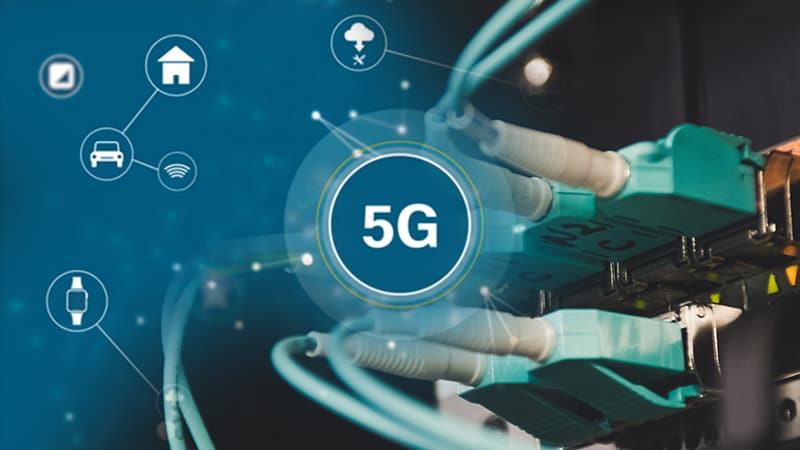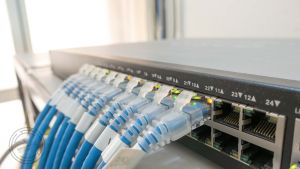5G is a revolutionary technology that’s expected to enable Industrial Digitization. It envisions a digital network that enables society to become mobile and connected while driving value creation in sustainable business models. 5G implementation will have an impact on social and business developments some of them would be as:
- High-capacity or high-performance outdoor and indoor broadband access in high-density spaces
- Increased user mobility
- The proliferation of the Internet of Things (IoT) devices
- Extreme real-time communication
- Ultra-reliable and lifeline communications
With 5G technology powering the next wave of business ecosystems and capabilities, a new and diverse revenue mix will be created for mobile operators who can turn their mobile networks into platforms for deeper interaction with content and services. This transformation to digital service providers will facilitate the creation of new disruptive business models coupled with lean operational efficiency. While this evolution has the potential to drive revenue streams for service providers into enterprises and vertical solutions, it is a significant business and technology transformation that must be visualized in an end-to-end fashion. The technology transformation is underpinned by the Network as a Service (NaaS) model, which creates a slice in the network to carry various types of traffic and service SLAs over a single network.
The Business Proposition for 5G
The new network infrastructure will address exponential bandwidth demands, massive logic scale, and the rise in low-latency requirements from new applications and services in an efficient, automated, and programmable manner using a flexible and agile network fabric.
Operators can grow Enterprise revenue streams through use cases like Fixed Wireless Access (FWA) and create varied business models as 5G enables IoT, machine-to-machine communication at scale, and low latency services, also known as ultra-reliable low-latency communication (URLLC).
The adoption of technological advancements in the radio domain also offers the potential for operators to accelerate the implementation and monetization of massive multiple-input and multiple-output (MIMO) technology. MIMO allows the dynamic transmission of data as highly focused beams to send and receive multiple data signals simultaneously over the same radio channel, with multiple users using the same time and frequency resources through millimeter wavelengths and small cells.
Bringing possibilities to life using Network as a Service (NaaS)
For operators to provide the use cases detailed above, the network must be used as a Service. There will be a need for a flexible, dynamic network configuration based on user-specific service requirements, as opposed to a one-size-fits-all architecture. To achieve the Network as a Service approach, network slicing – a critical service feature, is introduced in 5G technology. This feature, coupled with a slice orchestration engine, working in tandem and across various domains, as well as software-defined networking (SDN) controllers, allow operators to offer the NaaS solution to their enterprise customers.
Network slicing allows multiple logical networks to be run as virtually independent business operations on a common physical infrastructure. Network slicing provides a network with user-specific functionality without losing the economies of scale of a common infrastructure. Network slicing will be an end-to-end solution approach, traversing across the different layers of the packet network from access to core. For implementation, Network slicing will require platforms to be much more programmable, intelligent, and flexible in order to cope with heterogeneous environments and requirements.
The new services enabled by 5G will require that separate slices can be provisioned for different services based on the operator’s requirements, as well as those of the enterprise customer. Network slicing can be a combination of hard and soft slicing; hard slicing comprises the creation of separate planes or topologies with dedicated links, while soft slicing is logical isolation and traffic classification using VPN and quality of service (QoS).
In the 5G era, single network infrastructure can meet diversified service requirements. A 5G E2E network architecture is envisaged to have the following attributes: Provides logically independent hard and soft network slicing on a single network fabric to meet diversified service requirements and provides Telco Cloud consisting of DC SDN fabric and virtualization stack, providing a platform to host 5G infrastructure services as well as business services. Radio disaggregation and virtualization will reconstruct radio access networks (RAN) to provide massive connections of multiple standards and implement the on-demand deployment of RAN functions required by 5G. This also simplifies the core network architecture to implement the on-demand configuration of network functions through control and user plane separation, on-demand distributed functions and workloads, and unified orchestration and management.
The key tenets of 5G network transformation
Traditionally, mobile operators have had network architectures that are complex, rigid, monolithic resulting in high operating costs. To be operationally efficient, agile and to deliver NaaS, Service Providers will have to transform to Network Cloud architectures for 5G. The key tenets of this transformation are as follows:
- Transport simplification
- To reduce the number of devices from access to the core, states, and protocols on the IP transport layer with stringent timing considerations
- Network functions virtualization (NFV)
- Benefits include virtualization, disaggregation, agility and the ability to drive Capex savings leveraging non-modified opensource technologies
- Distributed Edge Cloud
- Hosting services at the network edge translates to bandwidth savings and better user experience while reducing touchpoints for network operations and management if deployed correctly
- SDN and Orchestration
- To build an automated network service and analytics framework visualized to network management for reduced time to market and improve operational efficiency
Bringing it all together: Cisco 5G
Network as a Service is a key framework for operators to monetize 5G. Cisco’s approach is to build a programmable, packet-based network architecture with orchestration and closed-loop automation. This takes place across various domains of the 5G network like Transport networks, Central and Distributed Edge data centers to host cloud-native network functions in an agile manner. This approach empowers operators to transform holistically from the one-size-fits-all approach to a dynamic network slice architecture to capitalize on the opportunity 5G will bring.
I look forward to meeting with you at 5G Asia to discuss how Cisco can drive your network transformation and create new opportunities for your business.
Cisco is a Gold Sponsor at 5G Asia and Network Virtualization Asia 2019 held in Singapore on 11-12 September. Visit Cisco and learn more from Cisco about 5G and our solutions from our presentations at the event:
5G Asia
Cisco at 5G Asia Keynote Panel: 5G deployment choices
Day 1: Wed, 11 Sept, 11:55-12:25.
Cisco at 5G Asia Track: Capturing new high margin enterprise revenue with 5G
Day 1: Wed, 11 Sept, 16:20-16:40
Network Virtualization & SDN Asia
Cisco at NV Asia Panel: Implementing virtualized services with private, public or hybrid clouds
Day 1: Wed, 11 Sept, 14:00-14:30
For more details about Cisco 5G, visit www.cisco.com/go/5g
Source: blogs.cisco.com Credit@ Rajesh Chainani











